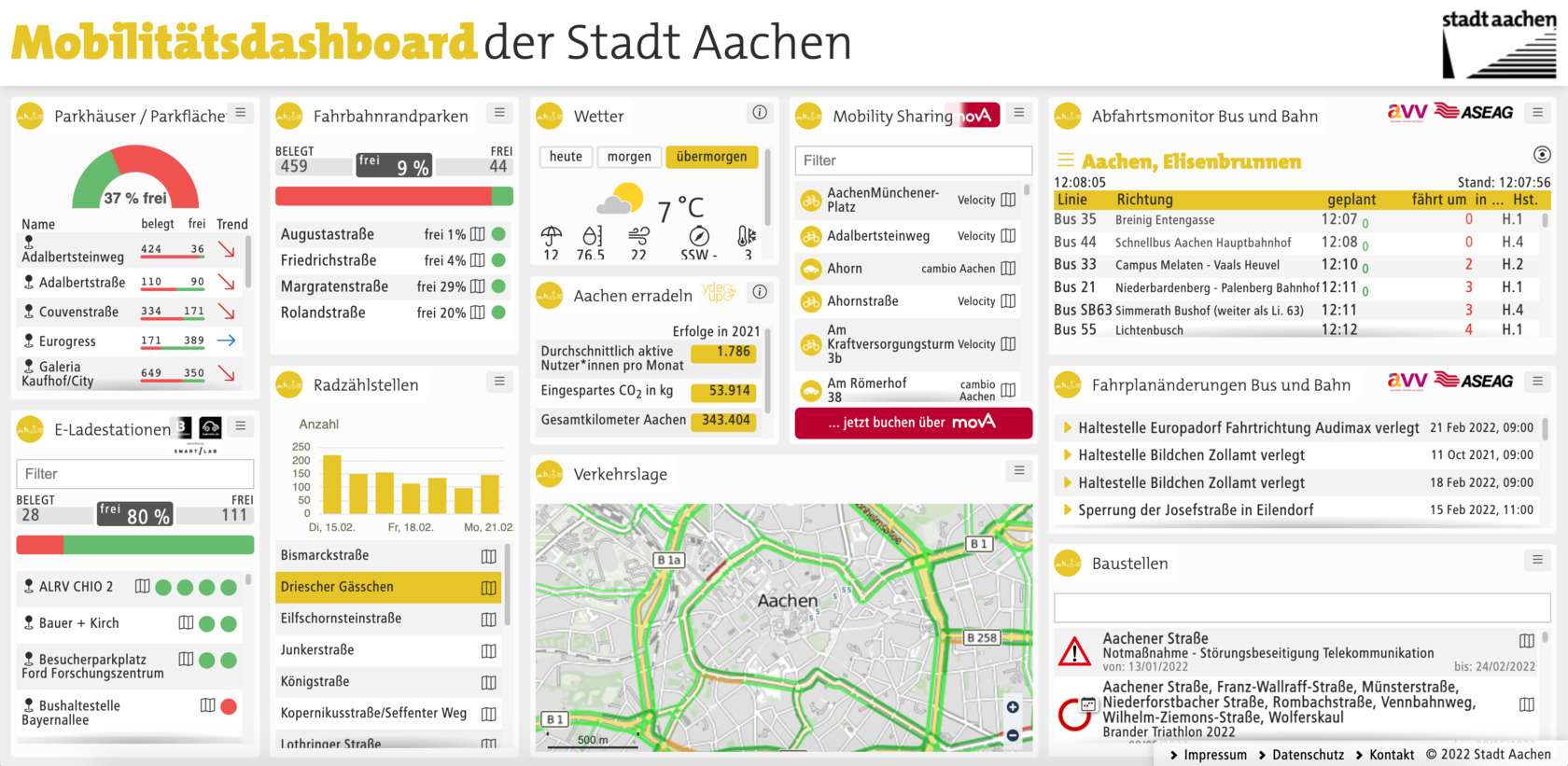regio iT builds Smart City dashboard powered by Staex
Summary
Staex in collaboration with regio iT built a smart city solution in the city of Aachen, Germany. Staex provided global connectivity between several sites. The data was collected from multiple sources, stored in a centralized database, and then presented on a public dashboard of the city of Aachen. Technology stack that was used before Staex included a VPN for each site and Kubernetes for application container management. Deploying Staex allowed the city to discard hard-to-maintain VPNs and replace Kubernetes with a simpler alternative with no coordinator nodes and control plane. The net effect was the radical simplification of the infrastructure and reduction of the installation and maintenance cost by roughly 70% mainly due to a smaller number of DevOps engineers needed to install, configure, and maintain the system.

About regio iT
German Cities are moving forward towards full digitalization of their city-wide technologies to provide citizens with accessible and transparent dashboards.
Germany is looking to the future, and model municipalities are becoming pioneers in the field of smart cities: by connecting parking spaces, charging stations for electric vehicles, public transport and much more, these cities want to provide their citizens with intelligent information about the mobility options in their region in the future. As the largest municipal IT service provider in North Rhine—Westphalia, regio iT GmbH brings together these different urban infrastructures in an easy-to-use mobility dashboard.
The problem
On the surface smart city solutions seem to be simple dashboards with tables and graphs, however, behind these visual engagement of information lies a complex communication infrastructure that makes implementing smart cities so challenging.
The infrastructure often consists of sensors, gateways, and servers located in different physical networks and managed by external third-parties entities with their own networks. All these systems have to be connected reliably and securely. This allows the connected machines to communicate with one another collecting data and presenting it timely and accurately on a city's dashboard. Especially in our tumultuous times, this dynamic system has to run seamlessly and securely while most cities have limited operational costs.
Moreover, connecting multiple networks in a city with its countless vendors and suppliers make things more complicated than in the usual cloud environment. How to enforce communication encryption? How to manage application containers in several local area networks? How to maintain firewall and network configuration? How to manage trust between parties? These are only a few questions you have to answer to implement a smart city solution.
Most of the aforementioned problems stem from the fact that there is no global connectivity in IPv4 networks and IPv6 is still not widely used. It is easy to manage network configuration, application containers, and trust within a single local area network: state-of-the-art IT automation tools (e.g. Ansible) work as usual within such a network. The good old way of providing global connectivity is VPN, but VPN configuration might be complicated for the large number of local area networks. The modern solution to this problem is overlay peer-to-peer networks. Staex is such a network. Let's find out how Staex solves the aforementioned problems.
Some application container orchestrators and some industrial systems' protocols (e.g. ModBus) that are used by sensors and other appliances were designed under the assumption that the local network is secure. To make their usage secure over several local area networks that are bridged together using global network Staex encrypts every piece of data that is sent over the network and also includes only those devices in the network that have valid public key certificates. In addition to that, each device's public key is also the address of the device which makes it impossible to duplicate the device's address without duplicating its private key.
Why Staex?
regio iT chose Staex as the platform provider because of the simplicity of setup and flexibility: within just a few days, Staex can be set up on any Linux-based platform and connected to the existing infrastructure. Regardless of how the city progresses with its smart city rollout, new devices can be added quickly and easily and provide new data for the citizen dashboard.
Devices and software used in pilot cities are provided by many different partners. Linking these IT components has proven to be a major challenge for conventional IT management solutions in the past. With Staex, all devices in the smart city can communicate seamlessly with each other. In addition, the software used by regio iT, the municipality as well as the hardware partners is easy to manage, without the need for a central management service. This also means that the pilot cities are scalable for future cooperation between the partners and the administration and that the service for the citizens can be further expanded in the future.
Furthermore, the dashboard provides the municipality itself and its administration with important information on traffic, breakdowns and other data that are indispensable for sustainable urban planning.
With Staex, we are moving into the future together. Its advanced solution gives us an enormous competitive advantage while reducing costs — combined with sustainable computing. This also convinces our customers.
In such fragmented IT landscapes as Smart Cities with public and private sectors, multiple providers and a multitude of IoT device, it is almost impossible to harmonize the landscape with existing solutions to seamlessly build IoT services and collect data. In addition, secure and resilient Smart City services need to be created for the future. Together with regio iT, we have confirmed this and are working to create a truly new model for smart city infrastructures.

Staex proved to be a more reliable and safer solution that reduces the cost of maintaining complex communication infrastructure. Staex main use case is bridging several different local area networks to form a flat network which is ideal for IT automation tools and other infrastructure services.
Ready to get started?
Talk to our tech team.
Contact us